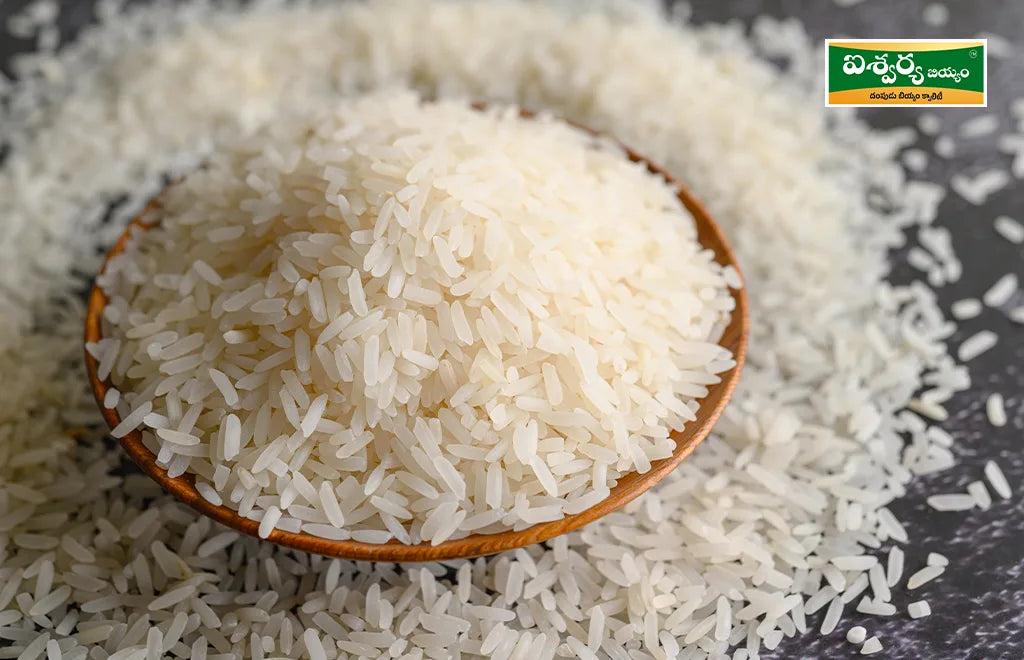
Old Rice vs New Rice: Why the Difference Matters
Rice is a staple in Indian kitchens, but there's more to it than simply picking between varieties like Sona Masoori or Basmati. One important yet often overlooked detail is the age of the rice, whether it is freshly harvested (new rice) or stored for a longer time (old rice).
This difference significantly influences taste, texture, digestibility, and even your overall health. Let’s explore how old and new rice differ, and how to make the best choice for your daily meals.
What is New Rice?
New rice is freshly harvested and typically consumed within a few months of processing. It contains more moisture, which makes it cook quickly and turn out soft and sticky.
Key Traits
- High moisture content.
- Soft and gluey when cooked.
- Mild, grassy aroma.
- Ideal for Pongal, Payasam, or baby food.
While suitable for certain recipes, the excess moisture in new rice often causes it to clump, making it less ideal for dishes that require grain separation.
What is Old Rice?
Old rice is rice that has been stored for a year or more after it is harvested. As it sits over time, it gradually loses moisture. This natural drying process makes the rice grains less sticky when cooked, improves their texture, and brings out a deeper, more developed flavor.

Key Traits
- Lower moisture content.
- Fluffy texture with separated grains.
- Light nutty aroma.
- Ideal for biryani, pulav, and everyday meals.
Old rice absorbs flavors better, remains firm after cooking, and is generally easier on the stomach.
Why Does Rice Age Matter?
The age of rice affects how it cooks and how it impacts your body. New rice is softer and works well in dishes that need a smooth texture. On the other hand, old rice has a firmer texture and richer taste, making it a better option for everyday meals.
From a health standpoint, old rice, particularly when it's minimally processed, keeps more of its fiber, is simpler to digest, and has a milder impact on blood sugar levels.
How they Compare Rice
| Feature | New Rice | Old Rice |
| Moisture | High | Low |
| Cooking Texture | Sticky, soft | Fluffy, non-sticky |
| Cooking Time | Short | Slightly longer |
| Aroma | Grassy | Mildly nutty |
| Digestibility | Heavier | Lighter on the stomach |
| Best For | Pongal, baby food, sweets | Biryani, pulav, and everyday rice meals |
The Value of Aged, Hand-Pound Rice
Not all old rice is created equal. Aged rice that is hand-pounded retains more of its natural nutrients and fiber because it isn't fully milled or polished. This method preserves the outer bran layer, making the rice a healthier option.
 Aishwarya Dampdu Biyyam, for instance, is a pure old rice that has been naturally aged for over two years and gently hand-pounded. This gives it a fiber-rich profile and a smooth and tasty finish. Because of its slow-digesting nature, it’s often recommended for those looking to manage obesity and diabetes through diet.
Aishwarya Dampdu Biyyam, for instance, is a pure old rice that has been naturally aged for over two years and gently hand-pounded. This gives it a fiber-rich profile and a smooth and tasty finish. Because of its slow-digesting nature, it’s often recommended for those looking to manage obesity and diabetes through diet.
Incorporating such rice into your daily meals can support both flavor and wellness, without compromising on tradition or taste.
How to Identify Old Rice
You don’t always need a label to know if rice is old or new. Here are a few tips:
- Feel: Old rice feels drier and firmer.
- Color: May appear slightly yellow or off-white.
- Aroma: Has a subtle, nutty smell.
- Cooking Behaviour: Absorbs more water and stays fluffy.
These cues can help you make an informed choice, even when shopping from local vendors or bulk stores.
When to Use Each Type
Choosing the right rice based on your Recipe and Cooking Needs.
New Rice Works Well for
- Soft dishes like pongal and kheer.
- Baby food or food for the elderly.
- Quick-cooking meals that require moisture.
Old Rice is Ideal for
- Flavored rice dishes like biryani or pulav.
- Daily meals where grain separation matters.
- Diets that require better digestion and blood sugar control.
When aiming for balanced, home-cooked meals that are both nourishing and flavorful, old, hand-pounded rice like Aishwarya Dampdu Biyyam can be a natural fit.

Final Thoughts
The difference between old and new rice goes beyond storage time; it also changes how your food tastes and how it affects your health.
Old rice offers more than just firm grains; it brings aroma, better flavor absorption, and lighter digestion to your plate. Particularly when it’s packed with fiber, smooth in texture, and prepared using traditional methods, it becomes an excellent addition to a health-conscious, balanced diet.
Next time you choose rice, consider not just the variety, but also the age. One small switch could lead to a more wholesome and satisfying meal experience—grain by grain.


